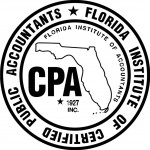An important financial tool for analyzing where your company stands financially and operationally is benchmarking. It is the process of comparing your company’s performance against internal historical performance metrics, and against the performance of similar companies (external) in the construction industry.
Benchmarking is invaluable in providing clarity as to your company’s performance. In business, complacency is a constant danger, and the use of metrics can be used to send warning signals of weakening or worsening situations long before they would otherwise become apparent. It can highlight opportunities for improvement as well, providing critical information that will sharpen your competitive edge.
Internal benchmarking is a powerful tool in assessing your company’s performance against in-house designated guide posts. A rising long-term debt-to-equity ratio would alert you to issues that may impact your bonding and borrowing capacity. Timely action would allow you to head-off problems before they became too large to correct easily.
External benchmarking helps you understand how other construction companies like yours have performed using metrics that relate specifically to your industry niche as well as geographic location. For instance, how does your time to completion compare with those of other similar businesses?
Our goal is to determine the financial health of our clients, providing them and their lenders and sureties with the data necessary to make informed decisions and take constructive actions. Here are a few of the ratios and benchmarks we examine when analyzing our clients’ companies during their annual audit:
- Tangible working capital to total equity – most sureties use 7.5% or greater as a benchmark for sufficient tangible working capital.
- Total equity to revenue ratio – sureties usually use at least 10% as a benchmark for adequate equity in comparison to revenues.
- We calculate the five year average of completed contract gross profit percentage which provides the best indicator of historical gross profit on finished jobs.
- Our gross profit percentage, net of subcontractors analysis shows how gross profit is affected by changes in the amount of work performed by subcontractors.
- Interest debt to total equity ratio – indicates the ratio of loans and equity used to finance assets. A ratio of 0.8 or less is considered acceptable by most sureties.
- Total liabilities to total equity – indicates the ratio of all debt and equity used to finance assets; and should remain at 3.0 or less to meet surety requirements.
- Debt coverage ratio – represents the level of total cash flow supporting each dollar of current debt. Generally, a ratio of 1.5 and above is desirable.
- Our backlog gross profit analysis represents the estimated amount of future gross profit not yet earned on uncompleted contracts. Generally, it should exceed 50 percent of general and administrative expenses.
- Our backlog as a percent of equity and revenue analysis indicates sufficient future work. Generally backlog should be at least 100% of equity and at least 50% of revenue to avoid work shortages.
- Cash to overbillings ratio – shows the ratio of cash in the bank to overbillings, and should remain above 100%.
- Cash as a % of equity ratio – indicates cash compared to equity. Generally, 10% or more is adequate.
- Cash as a % of revenue ratio – indicates cash compared to revenue; 5% or more is considered sufficient.
- Underbillings to equity and working capital ratio -should remain under 10 and 20%, respectively.
- Our working capital turnover analysis indicates the amount of working capital required to support volume. Generally, working capital should not turn over more than 12 times per year on average.
- The number of days in cash ratio – indicates the number of days of revenue in the cash balance. Generally a ratio of 14 days or more is considered adequate.
- Current ratio – indicates the extent to which current assets can satisfy current liabilities and should be at least 1.25 for a healthy contractor.
- Quick ratio – indicates the extent to which the more liquid assets can satisfy current liabilities; a ratio above 1.0 is generally considered a liquid position.
- Highly liquid ratio – indicates the ratio of assets which could be liquidated within 30 days to the liabilities which are due on demand or within the next 30 days.
A considerable amount of useful information can be gleaned from your financial statements. As the most important user of your financial statement, your bonding company is intensely interested in this analysis. Any benchmarks you establish in these areas can only help your bonding capacity, especially if you can demonstrate that you’re working to improve.
The best strategies for business and personal growth and success are specific to your business and personal situation. Your plan must be tailored to fit your unique circumstances. Contact Lanter, Leonardo & Levy for a no obligation consultation on building and preserving the company and wealth you have worked so hard to achieve.
Call Alex Leonardo or Rick Captain today at 561-998-7770


